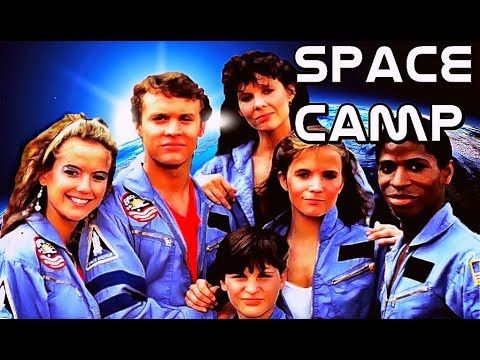
Timing doesn’t get much worse than this. Space Camp had the unfortunate role of being one of the worst timed movies ever.
Space Camp is a movie from 1986 about a bunch of kids attending a NASA space camp and accidentally get launched into space. The movie debuted less than 5 months after the Space Shuttle Challenger disaster creating a marketing nightmare for 20th Century Fox.
This movie had so much going for it. It had a great cast, great premise, and a lot of high-end production around it. This movie was intended to be a perfect family/PG movie that everyone could enjoy.
But things wouldn’t work out that way. This is a look back at Space Camp, the movie was doomed before it even opened.
Setting the Stage For Space Camp
Do you remember the Simpsons episode when Homer Goes to space? This isn’t far off the intent of Space Camp. In the classic episode, people were doing anything to avoid having to watch “another boring space launch” on TV.
NASA needed to create more public interest in the space program, and this is why Homer ends up able to travel to space.
This was a real thing happening in the mid-80s. Space travel had been a thrill through the 1960s and 70s–but it had become a bit stale going into the 80s.
NASA wanted to create more public interest in the space program, and this meant getting the attention of kids. It’s not that NASA created the Space Camp movie; they just played a big part in its production.
The goal was to make a “real-life” space movie. The space-related movies at the time were things like Flight of the Navigator (check out my blog all about it here) and the Arrivals. These were a bit too science-fictiony, so it was thought that a more grounded approach might resonate with kids.
Space Camp would be set in reality–as much as it could. NASA would be involved with the writing and production to make sure it was accurate and properly represented the agency. One of the main goals of Space Camp was to inspire kids to study science and space.
The Plot of Space Camp
Four teenagers visit a NASA space camp for three weeks in the summer. They are there to learn about NASA and mimic the training that astronauts go through. Their instructor is an astronaut who is bitter that she hasn’t yet gone to space.
They meet a robot named Jinx (voiced by 80s voice icon Frank Welker). Jinx takes everything he hears literally and when he hears one of the kids say “I wish I was in space,” he is able to trigger the launch sequence while they’re sitting in the Space Shuttle Atlantis.
The Shuttle hasn’t been cleared for space activity and doesn’t have enough oxygen or radio power. The kids now have to figure out how to stay alive while in space. Mission Control has got a hold of the shuttle and is trying to bring back the shuttle by autopilot.
One of the kids is trapped outside the shuttle, but they override the autopilot to rescue her. Now, they have missed their chance for a proper reentry and they come up with a plan to land in New Mexico.
Spoiler alert: they make it back safely.
Putting Space Camp Together
You may have never even heard of Space Camp, but there was a lot of excitement behind this movie. First off: it featured a pretty stellar cast. First off, you had future Mrs. Travolta: Kelly Prestons.
Then, you had Lea Thompson fresh off of Back to the Future. She would also have Howard the Duck opening in 1986, so that was an issue, too. I’ve got a great blog all about the iconic Howard the Duck movie if you want to check that out here.
Next, you had Tom Skerrit who would be a part of Top Gun. Also, Larry B. Scott was in it who you may remember from Revenge of the Nerds. Kate Capshaw was also in it who you may know as Willie Scott, the nightclub singer in Indiana Jones and the Temple of Doom.
Last, but not least: you had a very young Joaquin Phoenix, who went by Leaf Phoenix in those days.
So the pretty epic cast was in place. Space Camp would also feature some Academy Award-winning cinematographers to capture all the images. And in one of the biggest wins the movie celebrated, was landing legendary composer John Williams to create the score.
Everything was in place–so what could possibly go wrong.
January 28, 1986
You obviously know exactly where this story is going. If this is brand new to you, January 28th, 1986 was a day of national tragedy. This was the day the Space Shuttle Challenger exploded 73 seconds after takeoff.
An entire nation was watching live at home–including in pretty much every school in the country. For the first time ever, a civilian was onboard a NASA flight. This was the move by NASA to create more public interest in trips to space.
School Teacher Christa McAullife was chosen from tens of thousands of people to be the first civilian in space.
But she wasn’t actually the first choice.
This story seems a little unbelievable, but if you’ve seen the documentary “I Am Big Bird: the Caroll Spinney Story,” you know all about it.
Since NASA wanted to create more appeal with kids, the thought was that Big Bird himself would join the crew of the Challenger. Caroll Spinney–the actor inside Big Bird–shares in the documentary how this was one of the original plans.
When they found out the 8-foot suit was too big for the shuttle, they had to scrap the idea. This is when they decided to go with a civilian, and ultimately: Christa McAullife.
I was only 9 when this happened, but I remember it like it was yesterday. The country was in shock and disbelief. Space travel was supposed to be safe. How could this happen? It would take a while for the pain to go away.
And the movie Space Camp was opening in just a few months.
The Biggest Marketing NIghtmare in Film History
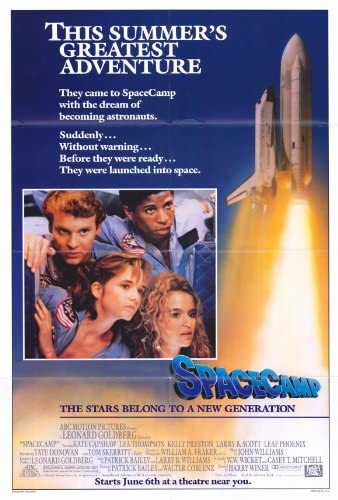
The Challenger has just exploded, and now you have a movie all about kids flying to space–and having to survive–onboard the Space Shuttle. In one of the all-time worst timing departments, 20th Century Fox now had a complete nightmare on its hands.
The release date for Space Camp was June 6, 1986–barely 4 months after the accident. And since you have to start promoting a movie a few months before it’s released: marketing had to be up by early April.
How in the hell do you begin to market a movie about a NASA Space Shuttle when the explosion of one has decimated the entire country?
This is what the marketers of Space Camp had to face. There was no playbook to use for this situation. Where do you even start? The accident was still too fresh in people’s minds, and now comes this movie that is going to completely trigger them.
Where do you even start?
20th Century Fox couldn’t ignore the promise of the movie: kids going to space on the Space Shuttle. The only thing they could do is focus on the underlying tone of the movie–adventure. Space Camp was kind of like a “Goonies in space” situation. Maybe if they focused on that aspect–and less on the Shuttle–they could find a way to promote it.
Public Backlash
Since Space Camp was a summertime movie, they could play up that tone. This was an adventure that just happened to be set in space. Some of the early promotional material played up this fact with the slogan “the summer’s greatest adventure.”
They also tried to capitalize on the fact this movie was about the dreams of kids and their pursuit of a goal. The tone of the movie was about growth and accomplishment. Maybe this would work.
Another marketing poster used the tagline “it started as a dream… it became a fantastic adventure.”
There was no good way to effectively promote this movie–and people didn’t respond well. Many thought it was way too soon. Many others thought they were exploiting the tragedy to promote the movie. This wasn’t the case–it was just a terrible coincidence.
The movie had started filming in 1985. It was also so delayed that it pushed the release date up. The movie also used real footage of the Challenger for the launch scenes. It wasn’t trying to exploit the tragedy; it had been intended to promote NASA. You have to remember, NASA was involved with this movie.
Everyone involved with the film tried to be as careful as possible not to exploit the tragedy in any way. But the public didn’t see it that way. This was a pretty hopeless situation. In his initial review, Roger Ebert said that “Space Camp is doomed before it even begins.”
It’s too bad because this should have been a huge summer movie–especially for families and younger people. The summer of 1986 was a great one for movies with options like:
- Aliens
- Ferris Bueller’s Day Off
- Top Gun
- Stand by Me
- The Fly
- Transformers: The Movie
- Flight of the Navigator
- Labyrinth
Space Camp would have fit perfectly during this summer. It had the kind of appeal that could attract a wide range of audiences. It also had drawing power in Lea Thompson, Kelly Preston, and the other kids that it would have attracted a large youth viewership.
But the stigma on the movie was too much to bear and Space Camp got crushed at the box office. It didn’t even crack $10 million. It was made of a budget of at least $20 million–not including the marketing–so it was a huge financial failure.
Speaking of movies from the summer of 1986, I put a whole blog together where I rank which summer was the best for movies in the 80s. Check it out here.
Was There Ever a Good Time to Release Space Camp?
Honestly, I don’t think so. For the next two to three years, it would have been met with the same response. Or, it would have been too jarring for people. These are the days when things didn’t wash out of the news cycle in 24-hours. Also, it was a tragedy the likes of which most people have never seen. It could never not be associated with the tragedy.
They could have waited and released it the next year, but it probably wouldn’t have made a difference. It’s too bad because it’s a good movie that connected with many young people. It would find an audience years later but could have been a much bigger hit.
And the initial intent of the movie worked. Lea Thompson says how people come up to her–to this day–and tell her that Space Camp inspired them to study science. It was an influence on many inventors and physicists.
Wrapping it Up
Space Camp could have been in the same category as Flight of the Navigator and Adventures in Babysitting. At best, it could have been Goonies in space. But it wasn’t meant to be.
This was a lose/lose situation. Short of not releasing it at all, there was no good time to put it out or any effective way to market it. It probably shouldn’t have been released that summer, but it’s obviously too late for that.
It could have been a straight-to-video release, and that might have worked. It did, eventually, find a bit of an audience and the people who discovered it have always loved it.
Space Camp exists as a movie that just had to take the L. There’s nothing you can do to prepare for a situation like this. It’s horrific timing and you just have to move on from it. It’s unfortunate, though, as Space Camp deserved to be a bigger hit than it was.

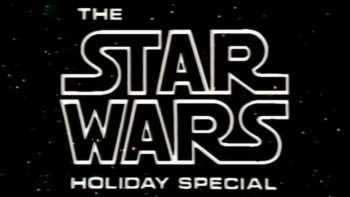
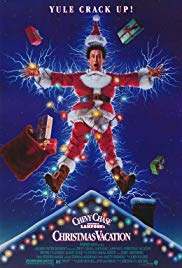
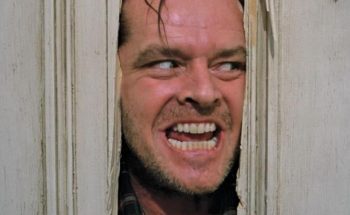
Good thing Big Bird didn’t go up in the shuttle. That would’ve been even worse! The shuttle blew WITH Big Bird on board?